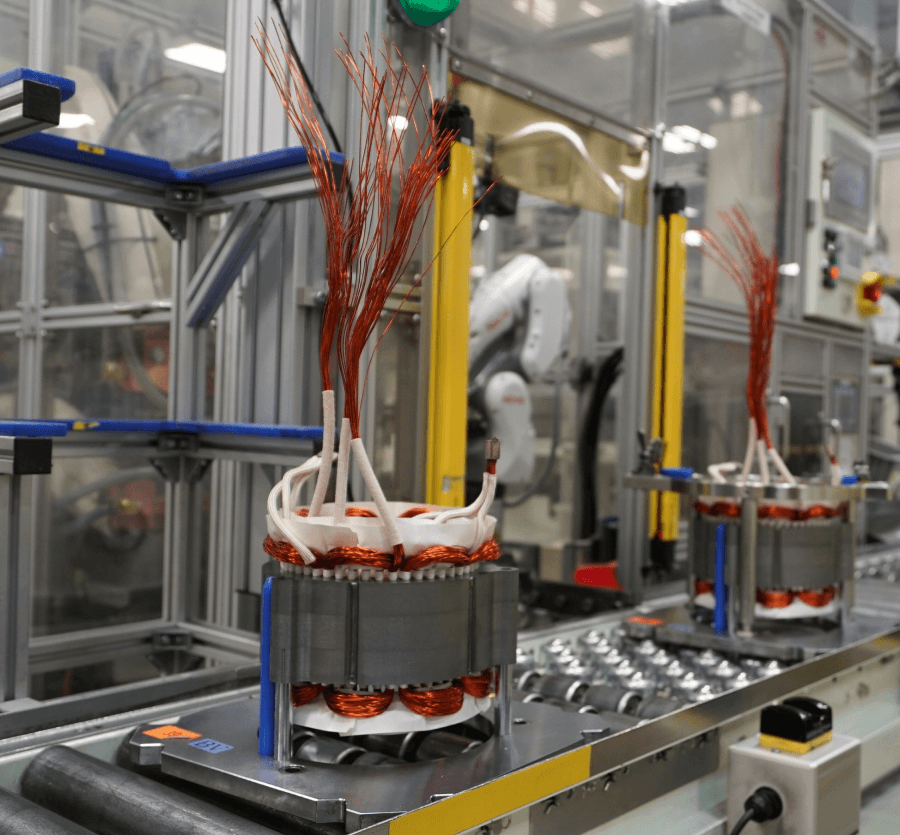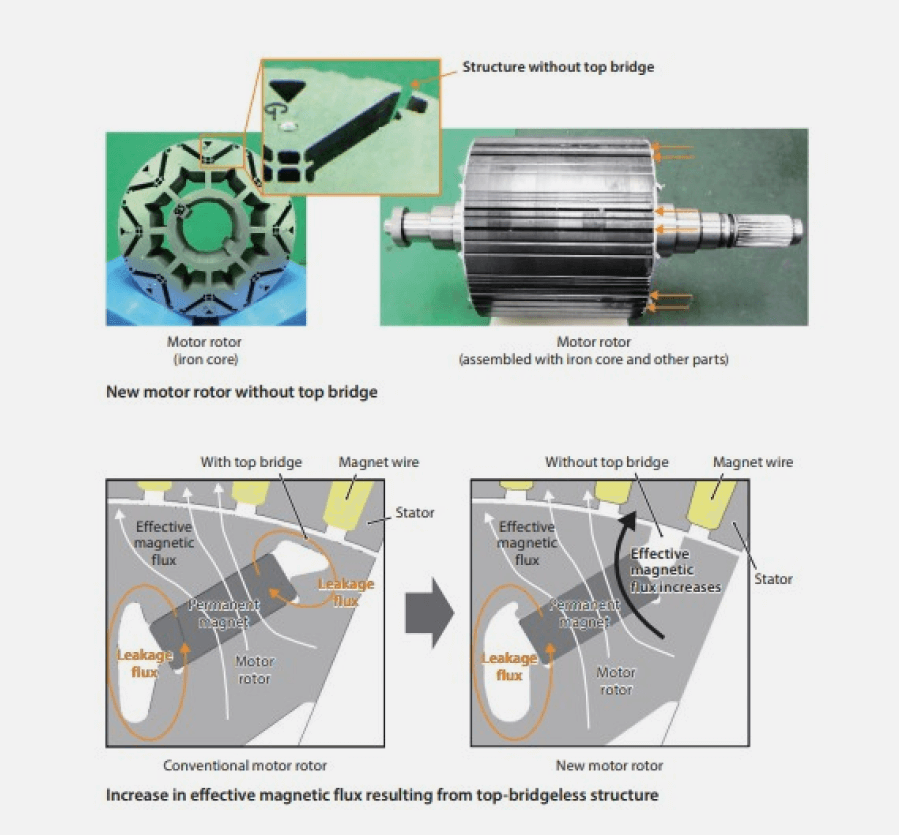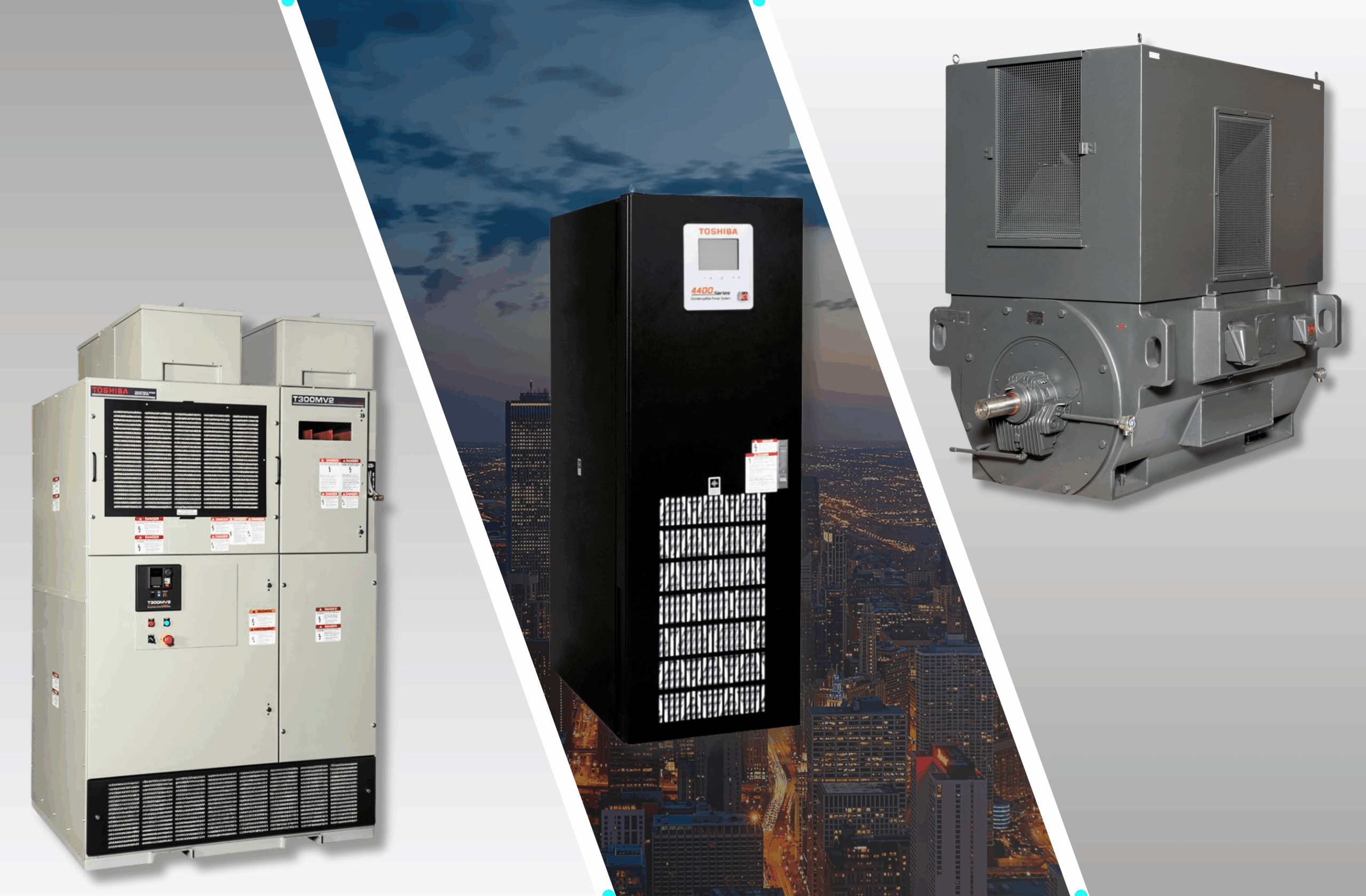- Industries Served
- Automotive Systems
Automotive Systems
Automotive Systems Industry
The demand for electric and hybrid vehicles (EVs) is rapidly increasing around the world. The automotive industry’s powertrain development has advanced significantly with the introduction of hybrid vehicles which combine traditional internal combustion engines (ICE) with electric motors (EM). These electrified vehicles offer much higher fuel efficiency and lower emissions, helping to lessen the environmental impacts of transportation. Furthermore, hybrid technology encourages the shift from gasoline-powered vehicles to more sustainable ways of transportation, such as electric vehicles (EVs). The push to electrify vehicles is encouraging the competitive development of sophisticated propulsion systems, increasing efficiency and power, and driving additional growth in the electric powertrain market.
Toshiba’s HEV (Hybrid/Electric Vehicles) electric motors make a significant contribution to sustainable mobility solutions, aligning with the company’s overarching objective of enhancing the well-being of individuals and tackling worldwide environmental issues. Toshiba is increasing the production capacity of high-performance motors for HEV vehicles to fulfill the increased demand from car/truck manufacturers and to contribute to the development of sustainable transportation. Our product design and manufacturing teams are highly skilled in engineering, specializing in creating vehicle performance-enhancing products and producing vast quantities of high-quality items. Toshiba will continue to focus on expanding HEV drive motors and generators production to help create a carbon-neutral society and accelerate vehicle electrification.

Available Toshiba Products Applicable To The Automotive Systems Include:
Technologies
The rotor of a motor is designed to efficiently transmit the magnetic flux from the magnets installed inside to the stator. However, the thin wall of the rotor surface (top bridge), designed to provide mechanical strength, was(is) one of the causes of flux leakage.
The rotor structure we have developed enabled us to eliminate the top bridge while ensuring the mechanical strength of the rotor. As a result, the leakage flux is reduced, the effective magnetic flux that contributes to torque generation in the motor is increased, and the use of magnets is reduced by using other techniques as well.
We have established the rotor technology for mass production and delivered a prototype to an automobile manufacturer in 2023.
We will continue to contribute to the spread of electric vehicles by providing motor products with low cost and enhanced environmental performance.
Motors for electric vehicles that reduce the use of magnets containing rare earths by approximately 30%


